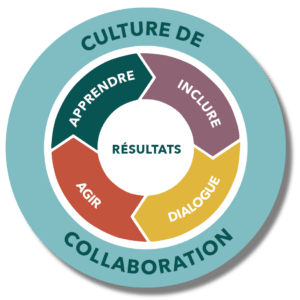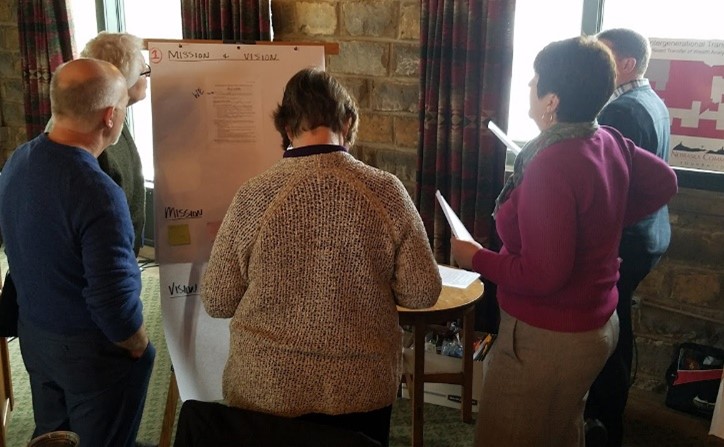Over the past twenty years, the Canopy team has had the honor of working with hundreds of organizations on their strategic plans. In the early years, this often meant updating or “refreshing” whatever plan the organization had in place and extending it for another 3-5 years. Over time, however, it became clear that the shelf life of most strategic plans was much shorter than the date on the package. The more detailed the plans, the less inspiring they tended to be, and the more they ran out of steam by the end.

As a result, the Canopy shifted its approach to helping organizations develop compelling strategic frameworks that define the core elements of an organization, and literally get everyone on the same page (or two). Strategic frameworks typically include a compelling vision, a clear mission, defined areas of focus for the organization’s work, core values, and long-term goals. Together, these elements provide enough structure to define the organization’s identity, while providing enough flexibility to allow the organization to adapt and innovate as it pursues its goals. It forms a strong container—like the Culture of Collaboration ring of the Community Learning Model—that supports a continual learning process over time.
The value of a good strategic framework was illustrated recently when the Canopy reconnected with the Nebraska Community Foundation (NCF). The Canopy helped NCF develop its strategic framework in 2017-18, and CEO Jeff Yost reached out recently to see if the team would be willing to work with NCF to help some local community funds develop their own strategic frameworks to guide their local giving strategies.
Unlike most community foundations, which serve as a place to pool community funds to give out in the form of grants to community nonprofits, the Nebraska Community Foundation helps communities across Nebraska build their own unrestricted endowments and distribute the funds locally. Some of these “community affiliated funds” generate more from these endowments than from local taxes and are using them in innovative ways to revitalize their communities. As a result, NCF is helping change the narrative of rural towns from places in decline to communities that are thriving and attracting people to move back to. This inspiring spirit was voiced often throughout the planning process that led to their strategic framework, and is captured in NCF’s vision: Nebraska is a place where our hometowns are achieving their dreams.
Hearing Jeff talk about the power of that experience was instructive. “In years prior to developing the strategic framework, I’d become increasingly frustrated that our most recent strategic plan was ‘outdated’ or even ‘irrelevant’ not long after we’d gotten it finalized. We needed a different tool (or possibly a different operating system).”
What Jeff appreciated about having a compelling strategic framework was that it provides a sense of purpose for the organization and clarity about their unique mission—not only where they are heading, but why they are going there. It outlines a “true north” for everyone to follow, knowing they will have to “tack” back and forth along the way as the seas and weather of the journey change. This clarity was so valuable that in 2022, the NCF Board reaffirmed the strategic framework without making a single change. “No changes was shocking to me,” Jeff commented, “given how the rest of the world was turned upside down in 2020-21.”
Because a good strategic framework provides clarity and consistency, it allows the organization to adjust and adapt their work plans on an ongoing basis using more targeted indicators of progress. In NCF’s case, the indicators evolved dramatically from the first 5-year operating plan “and can continue to be tweaked (or thrown out or new ones added) as we learn and discern. We have at least one board committee responsible for all, or a portion of, each of the six goals.”

Jeff also sees value in the strategic framework as a primary governing document, and a way to guide decisions. “The board is now in the habit of using it in decision-making. It helps them focus on asset-based community development (ABCD) and generational community building, not just asset accumulation. It helps staff use good discretion on how best to use their time and energy. And it has served as a nice tool to share with various constituents, ranging from affiliated funds to funders to grant seekers to community/organizational partners, to sum up or explain what NCF does and what we don’t do.”
While the Nebraska Community Foundation is unique in how effectively they build the capacity of rural communities to achieve their dreams, the value they find in their strategic framework is a common story. Effective collaboration at the organizational level and at the community level requires a shared, elevating goal, a common sense of purpose, and clear direction, and an ongoing learning process within a culture of collaboration. A clear strategic framework helps ensure those conditions are in place.


